Jesus is in the grave. Crucified yesterday, he lies wrapped in ribbons of burial cloth, awaiting tomorrow’s resurrection. Such is the teaching of the Church, which we recite every Sunday:
For us men and for our salvation
he came down from heaven,
and by the Holy Spirit was incarnate of the Virgin Mary,
and became man.
For our sake he was crucified under Pontius Pilate,
he suffered death and was buried,
and rose again on the third day
in accordance with the Scriptures.
He ascended into heaven
and is seated at the right hand of the Father.
And so he is buried.
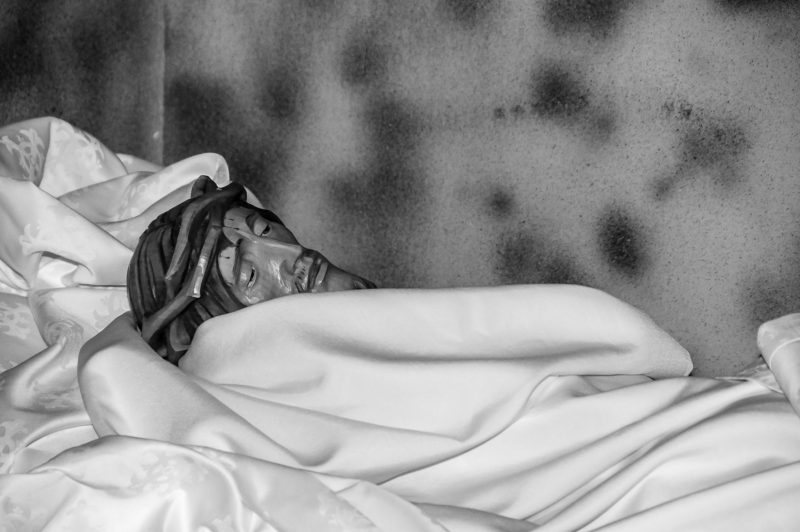
The Polish tradition — and the tradition of other cultures, I’m sure — is to create a tomb for Jesus’s body in the church. One of the figures is taken from the cross and laid in the tomb, and parishioners — usually firemen — stand watch until Sunday morning.
One of the vicars in our parish is Polish — this year, he decided, with the pastor’s blessing, to bring the tradition of Jesus’s tomb to the parish of St. Mary Magdalene. And so the Paschal Triduum feels a little more like we’re in Poland every year.
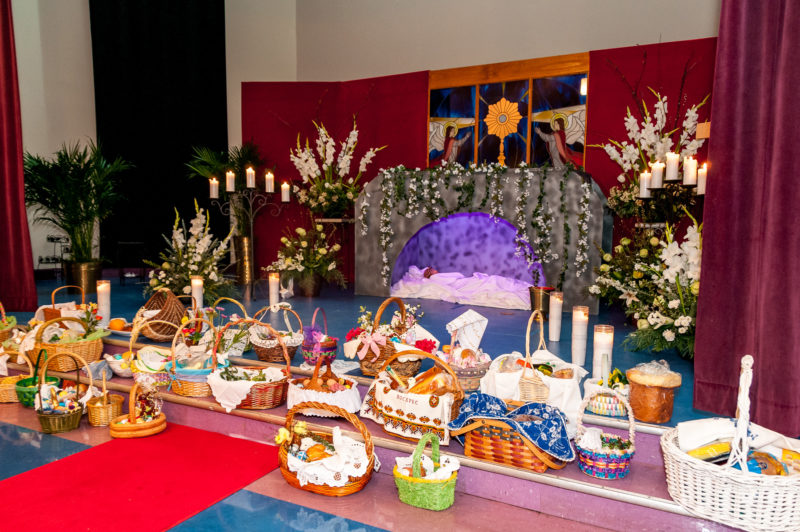
Past years involved the pastor, who had never performed the traditional Holy Saturday basket blessing, coming for a quick prayer of the baskets of perhaps fifteen Polish families. Our pastor, however, has fallen in love with the tradition, has it announced several times before Holy Saturday, and has put it on the altar servers’ schedule so that we have a full procession.
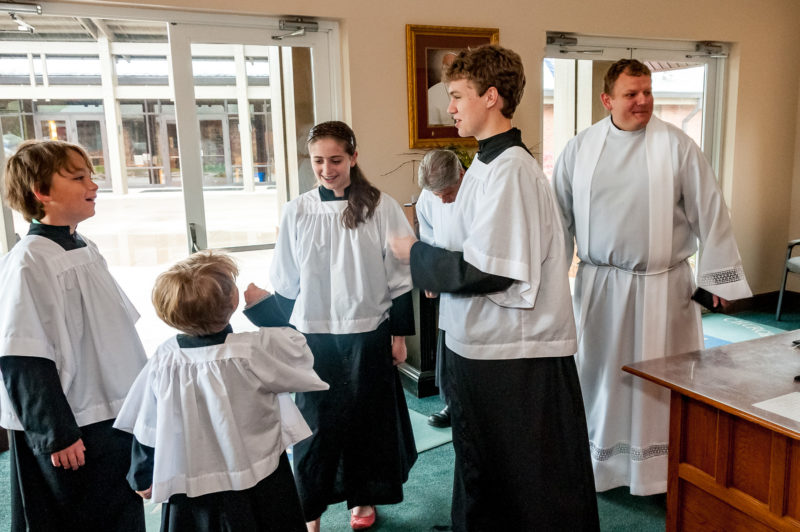
The number attending has grown as well. After an opening prayer in Polish, Father W asked, “How many of you don’t speak Polish?” At least a third of the assembled raised their hands. Seeing so many, Father W, like last year, turned it into a primarily-Polish-but-quite-bilingual-blessing-nonetheless.
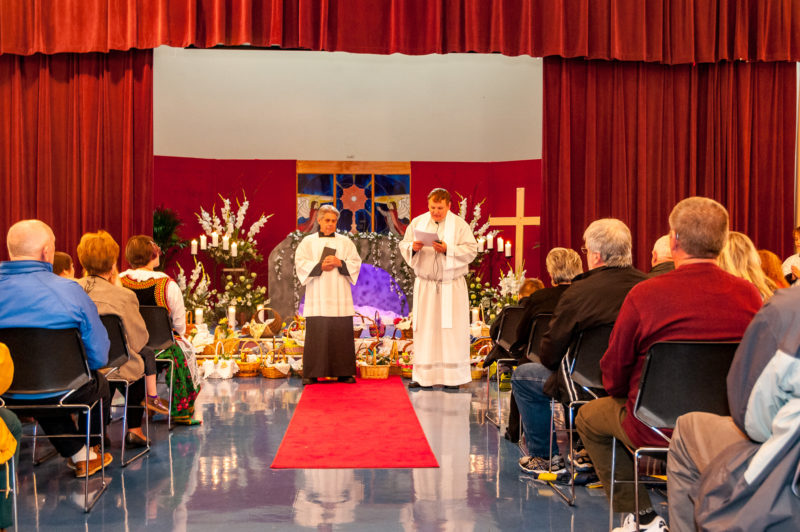
There are some things still missing, though. No crucifix lay at the front of the grave, with parishioners standing in a line, dropping to their knees at the fourth or fifth pew and continuing the rest of the way on their knees, all bending to kiss various parts of the crucifix. Blocks of wood have not replaced bells during the Lenten Mass. The day was not preceded with a Good Friday of manic baking and cleaning, just baking and cleaning. More reminders that the Polish community here is a distinct minority, a group that has largely assimilated into mainstream culture but still managed to keep the most important of traditions. In other words, it didn’t feel Polish; it felt American-Polish.
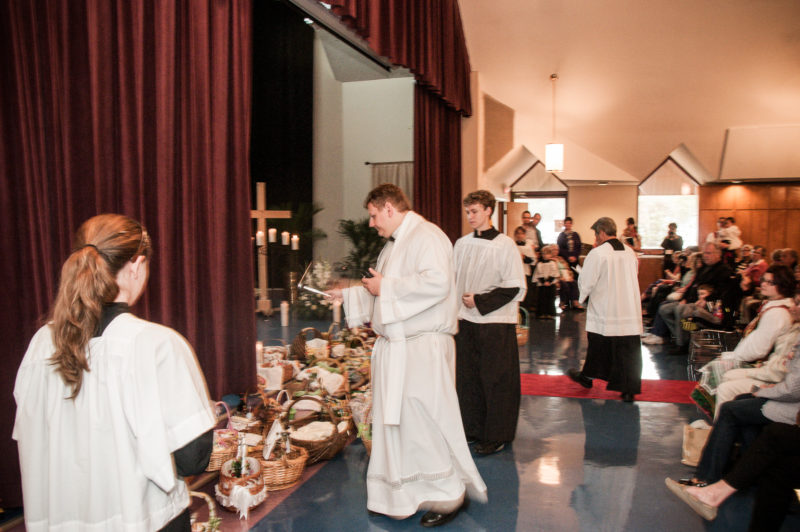
And then there are the things that would never occur in Poland: the fascination with the custom (after all, custom often becomes merely customary), the eagerness for photos of the regionally dressed (after all, if you see it almost every day in one form or another — especially when you live near a tourist region — it’s nothing special, merely every day)
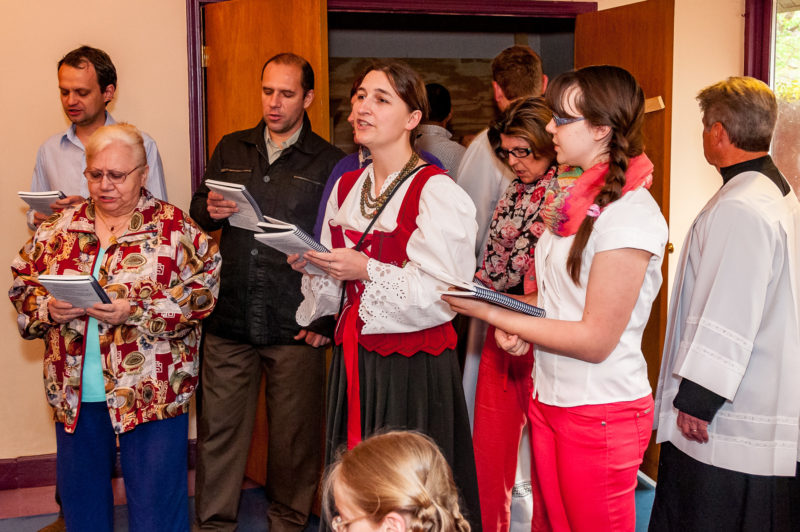
But when it’s something you see once a year? Well, who can blame us all?
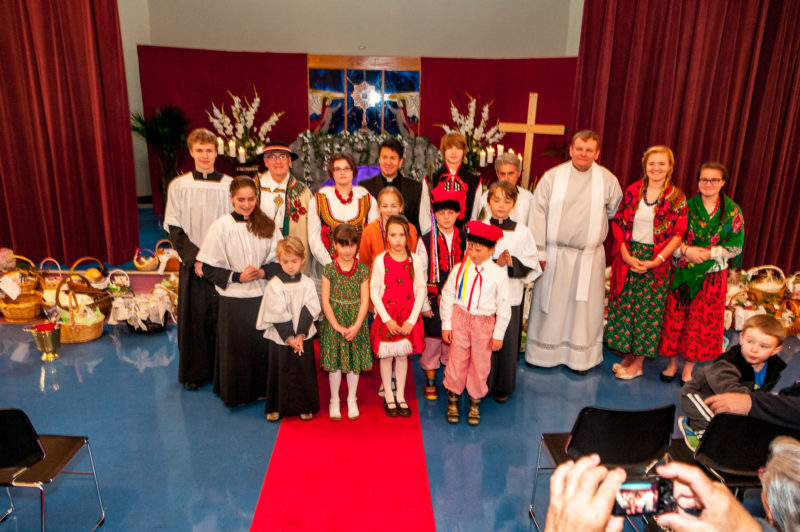
0 Comments